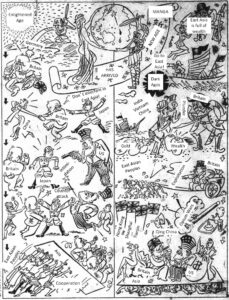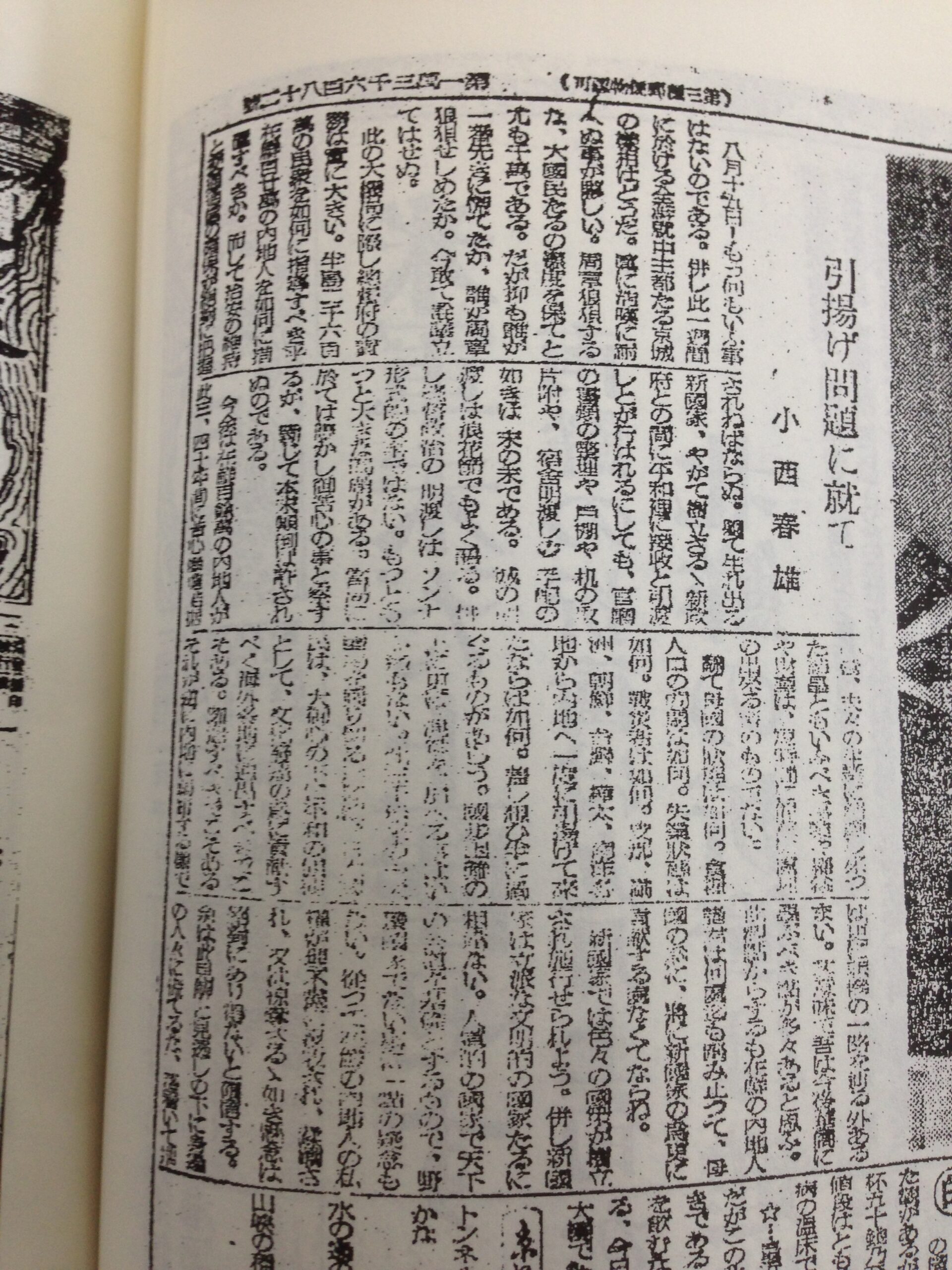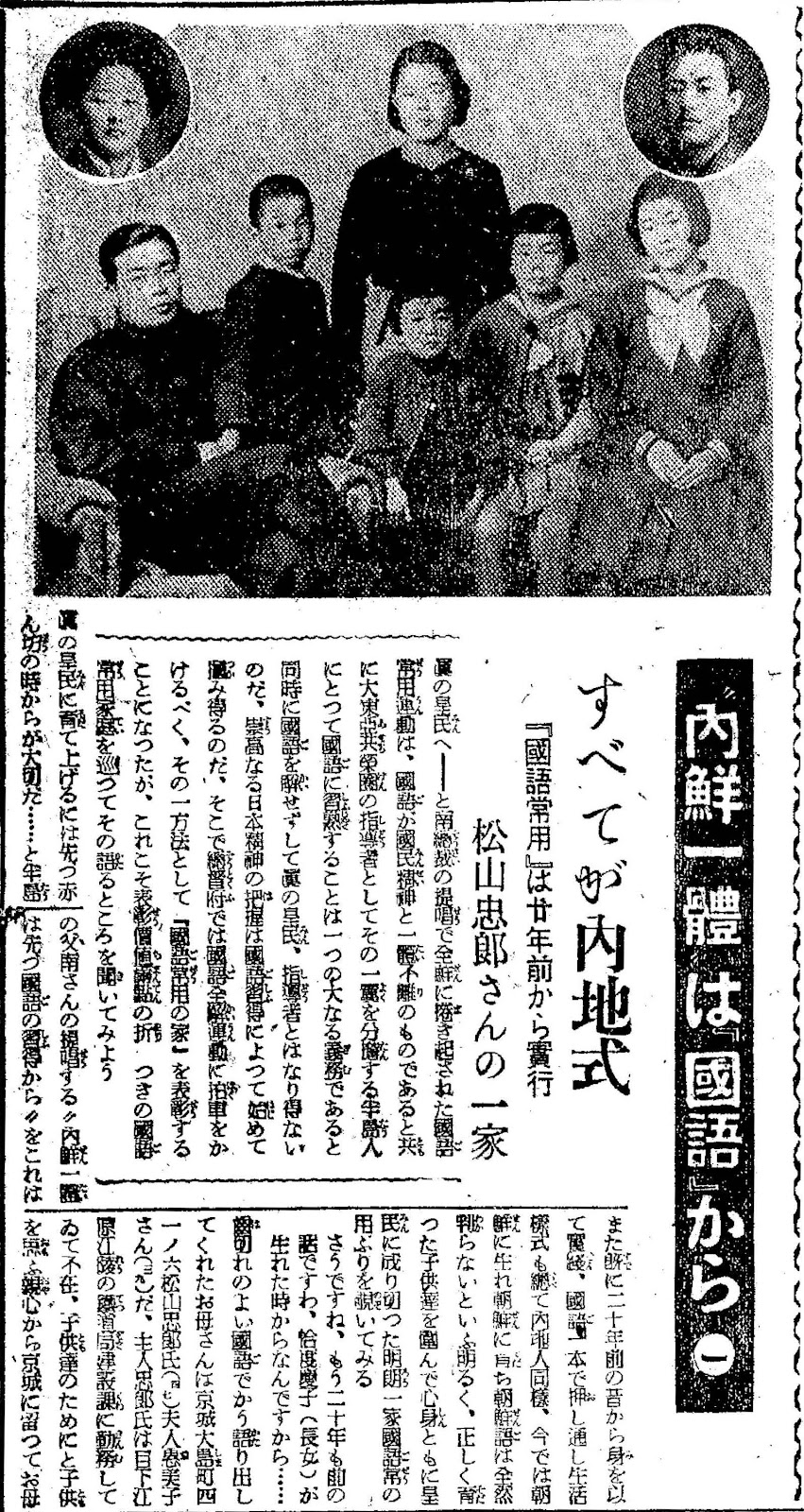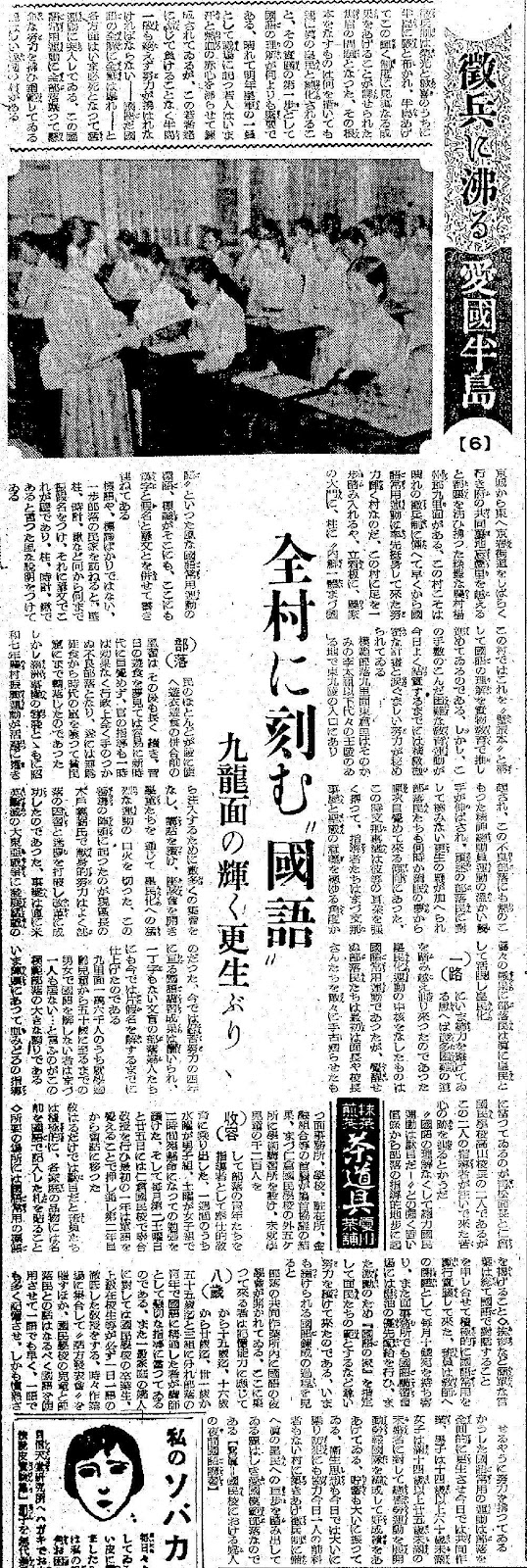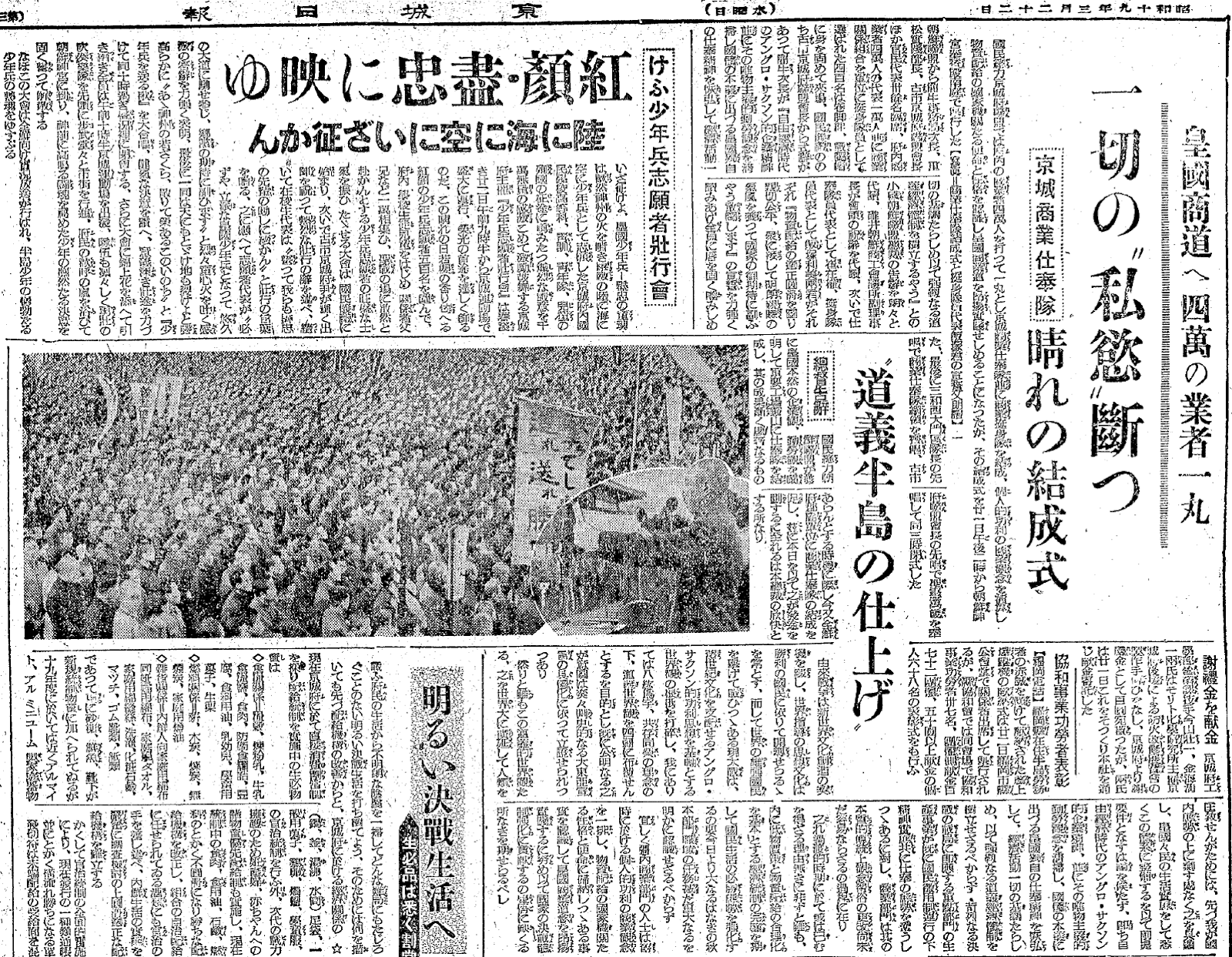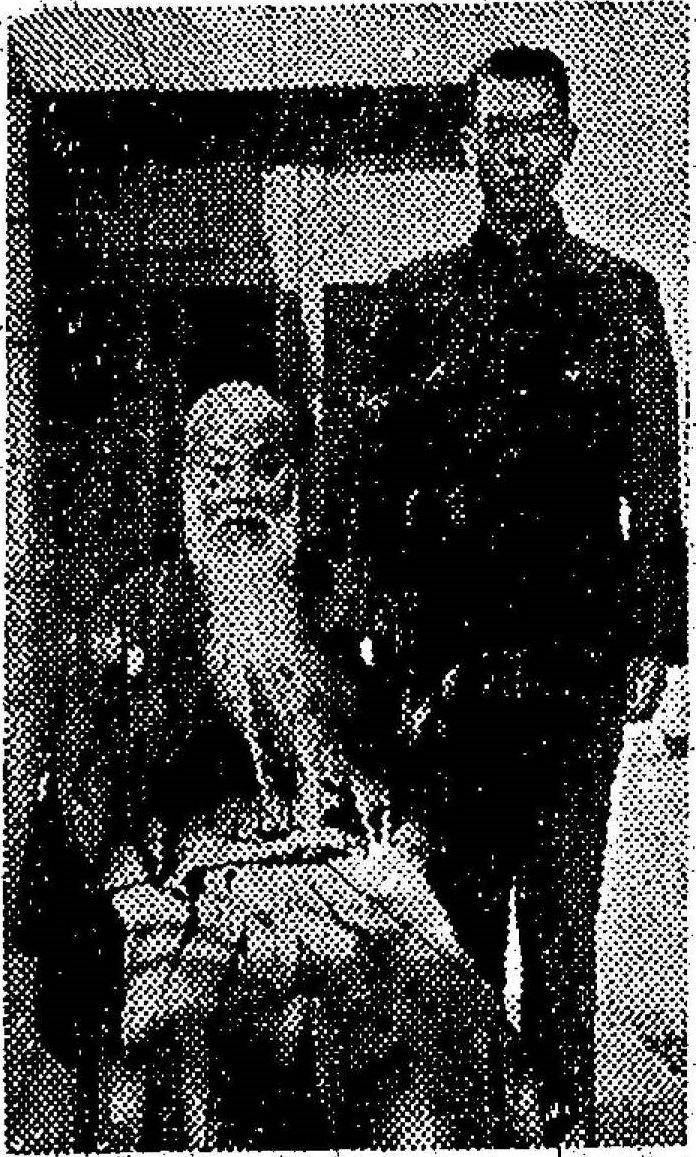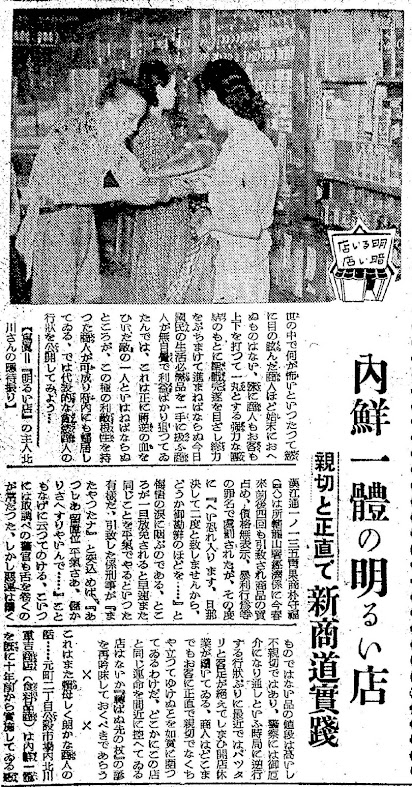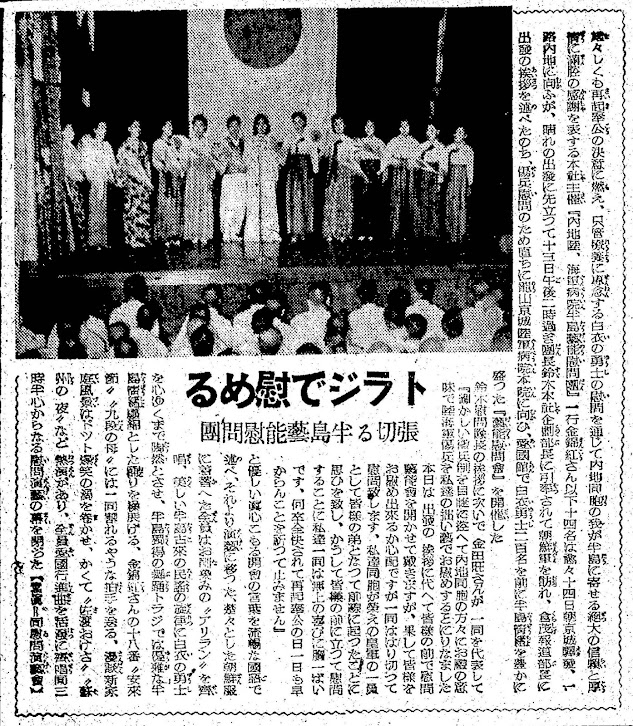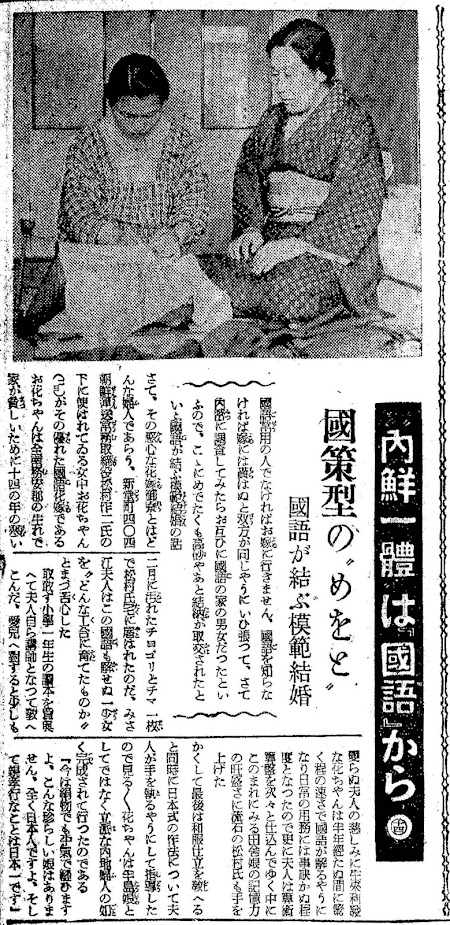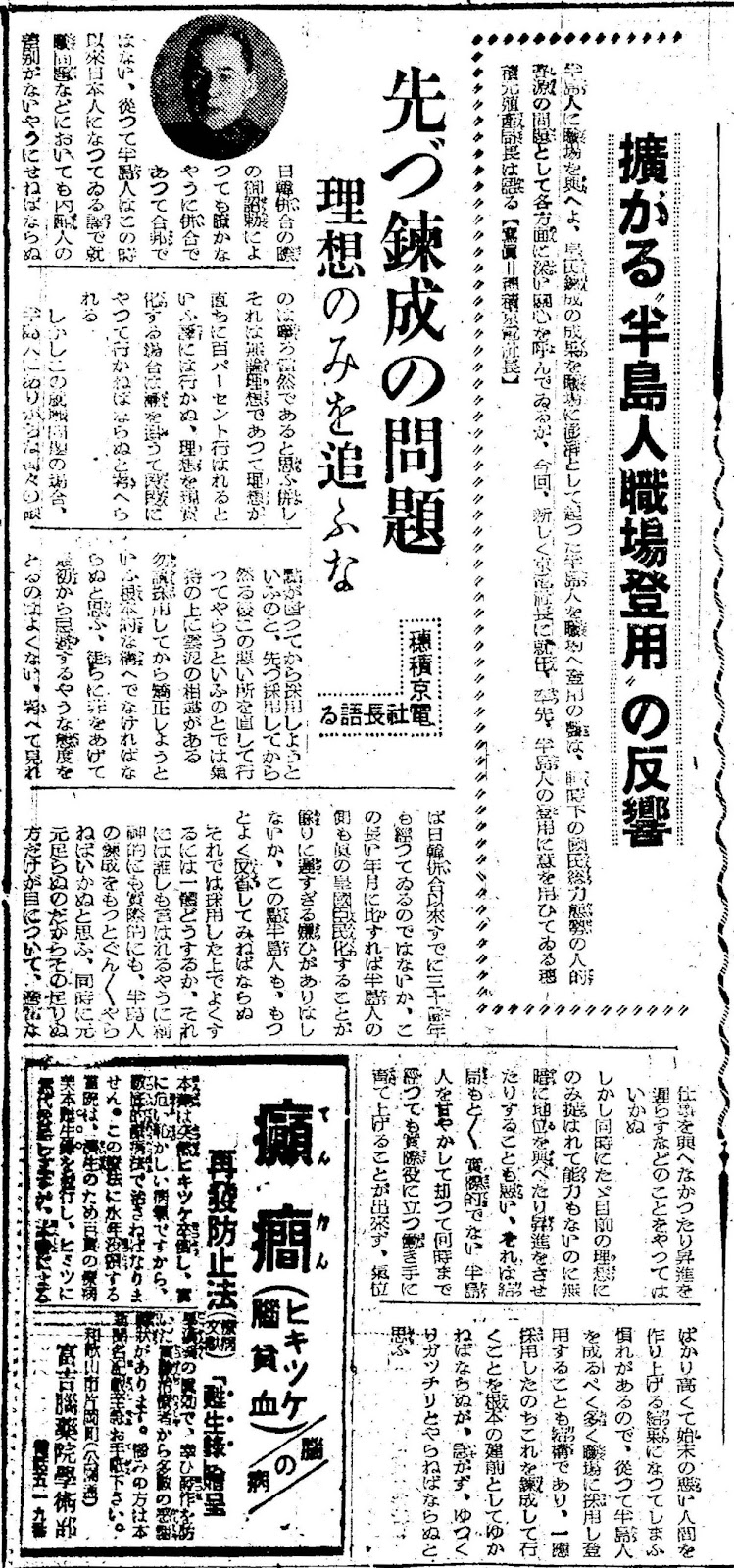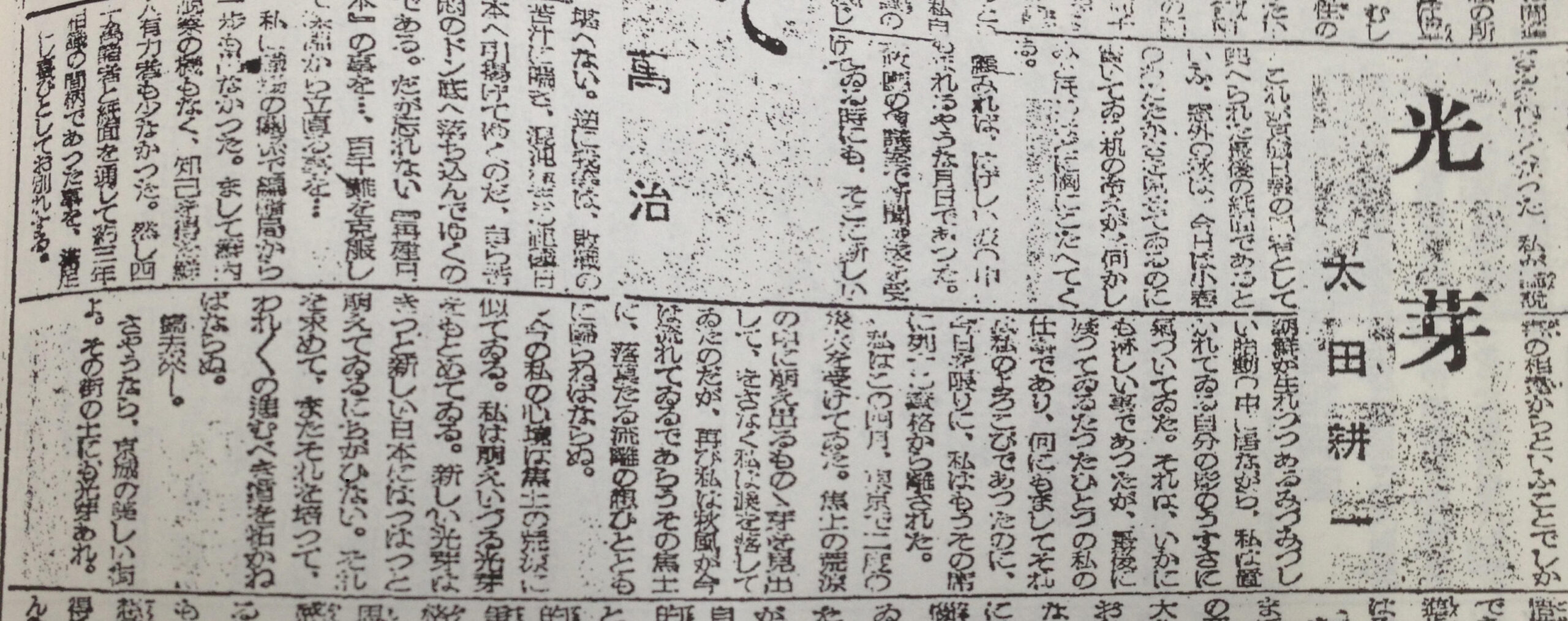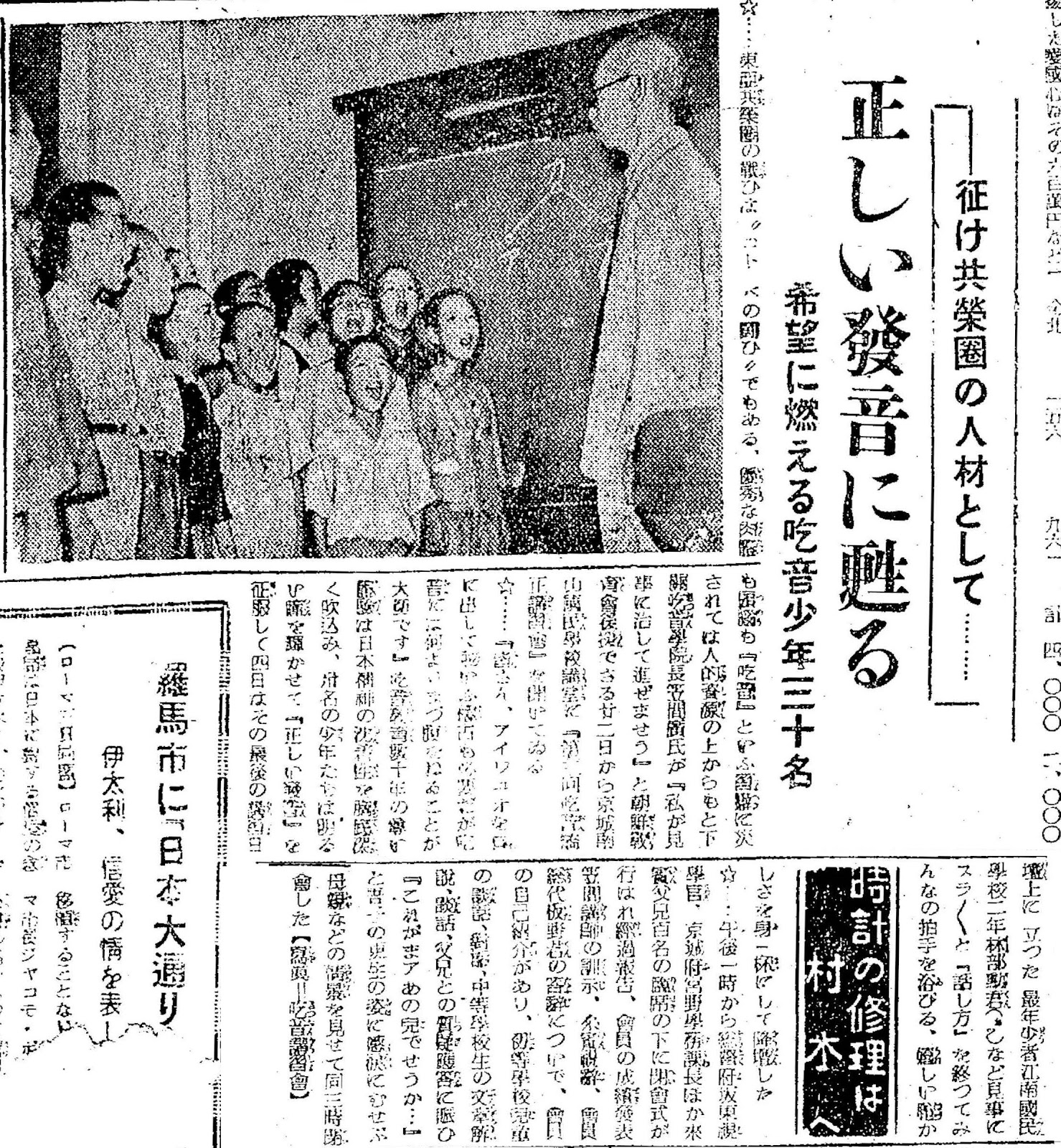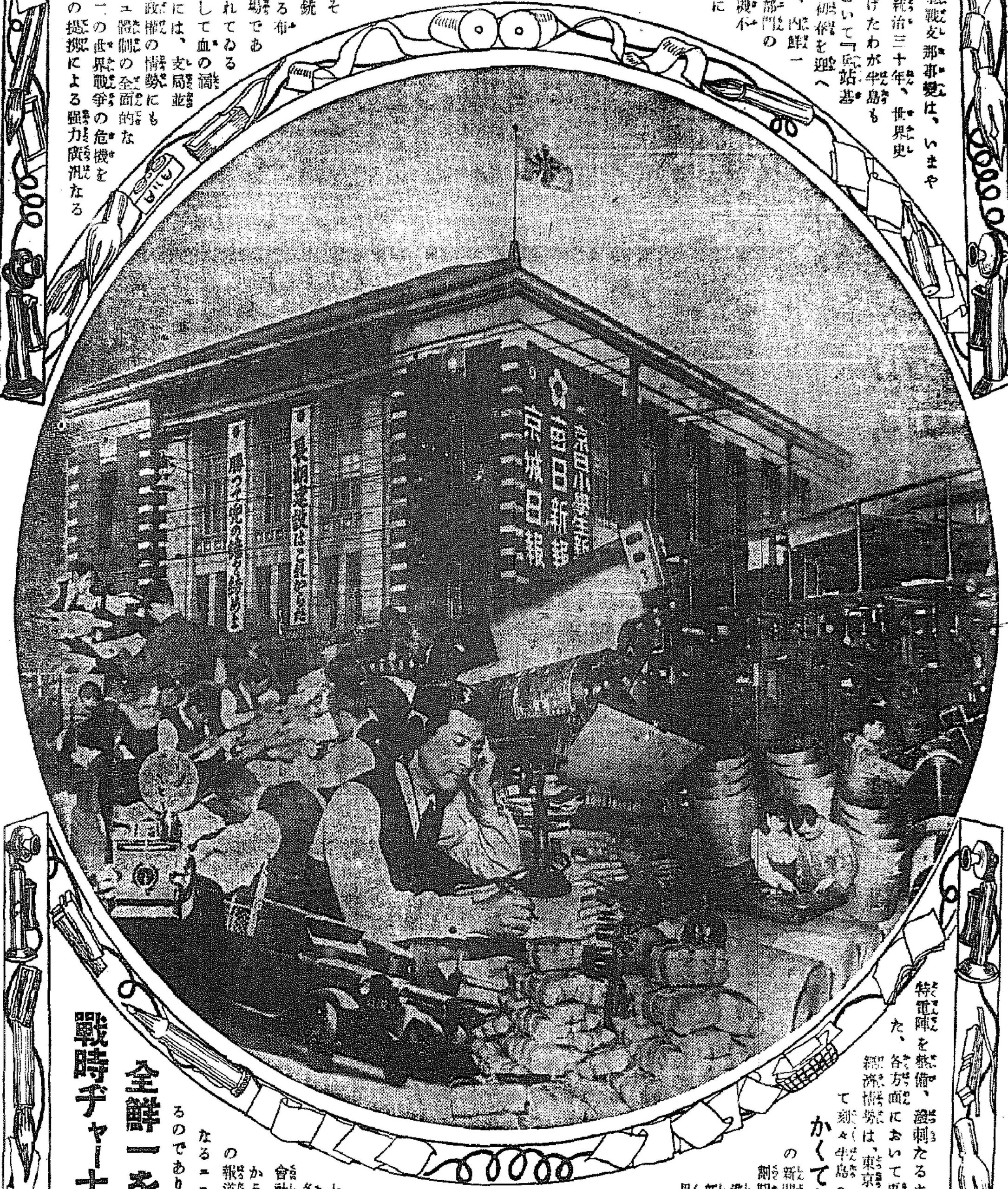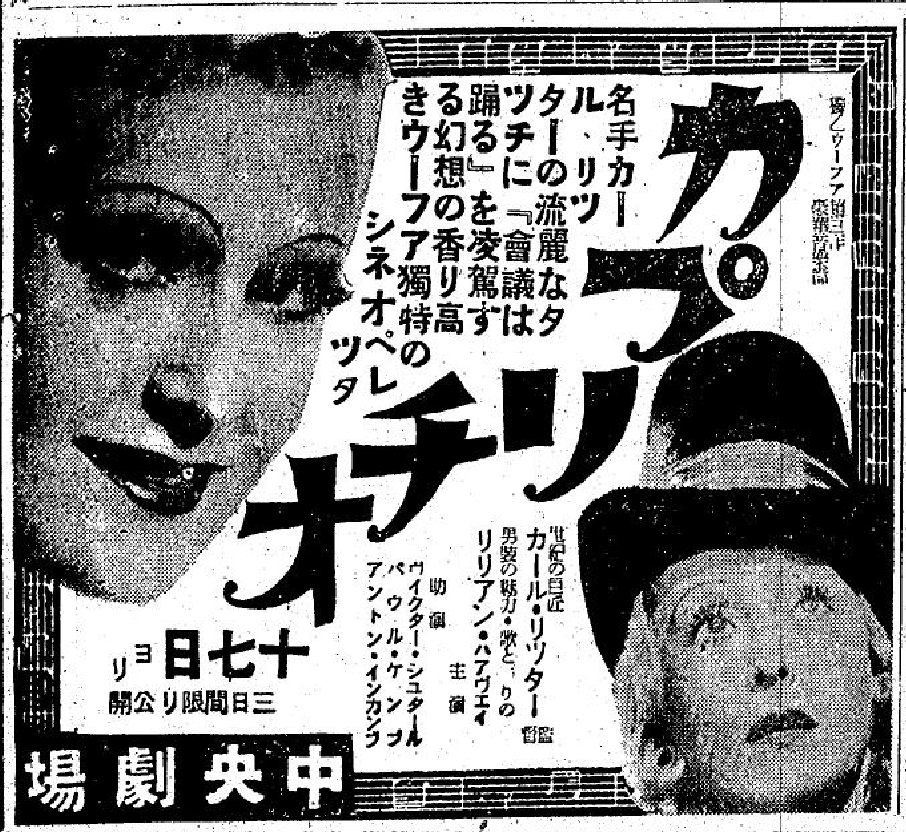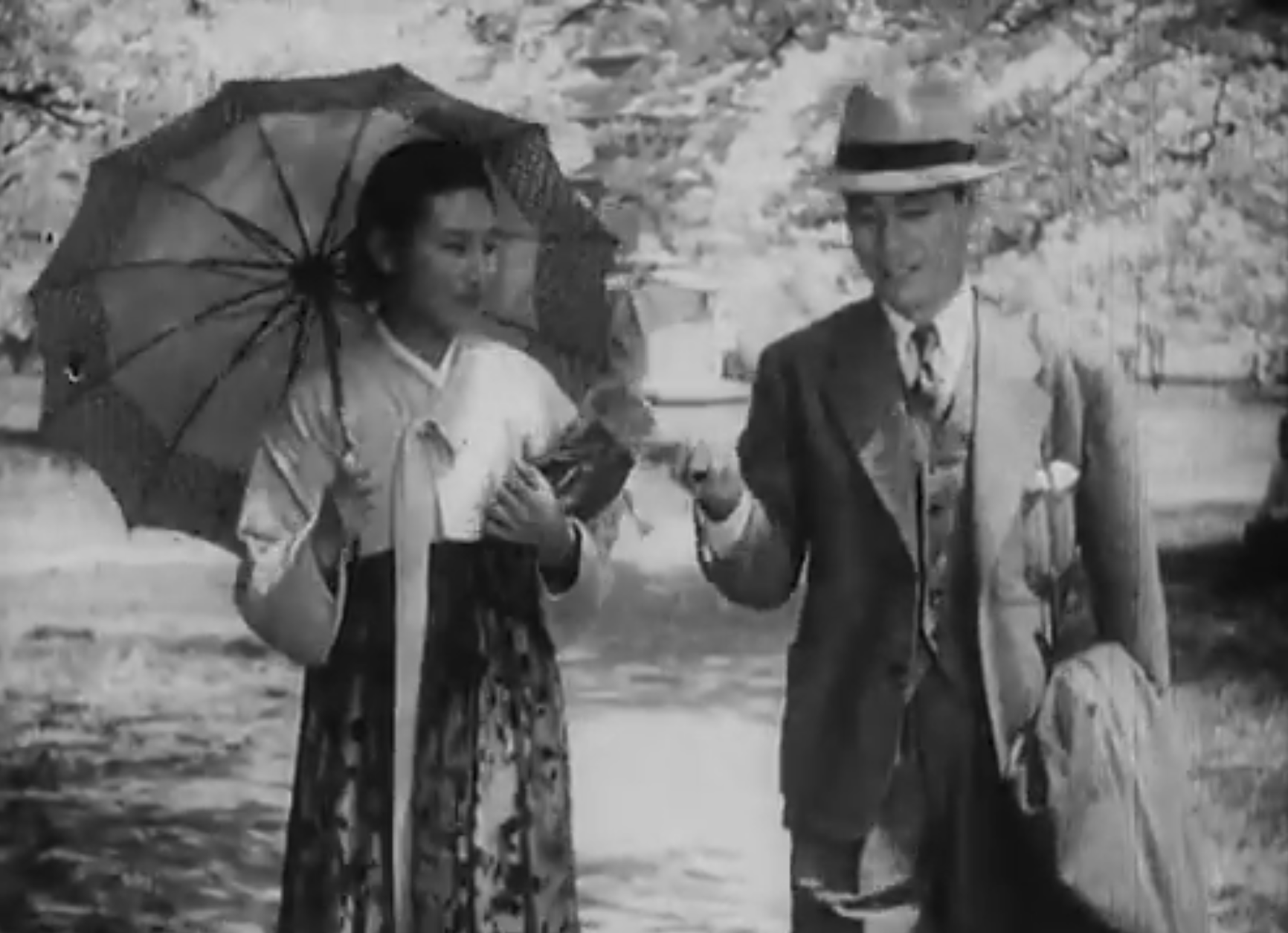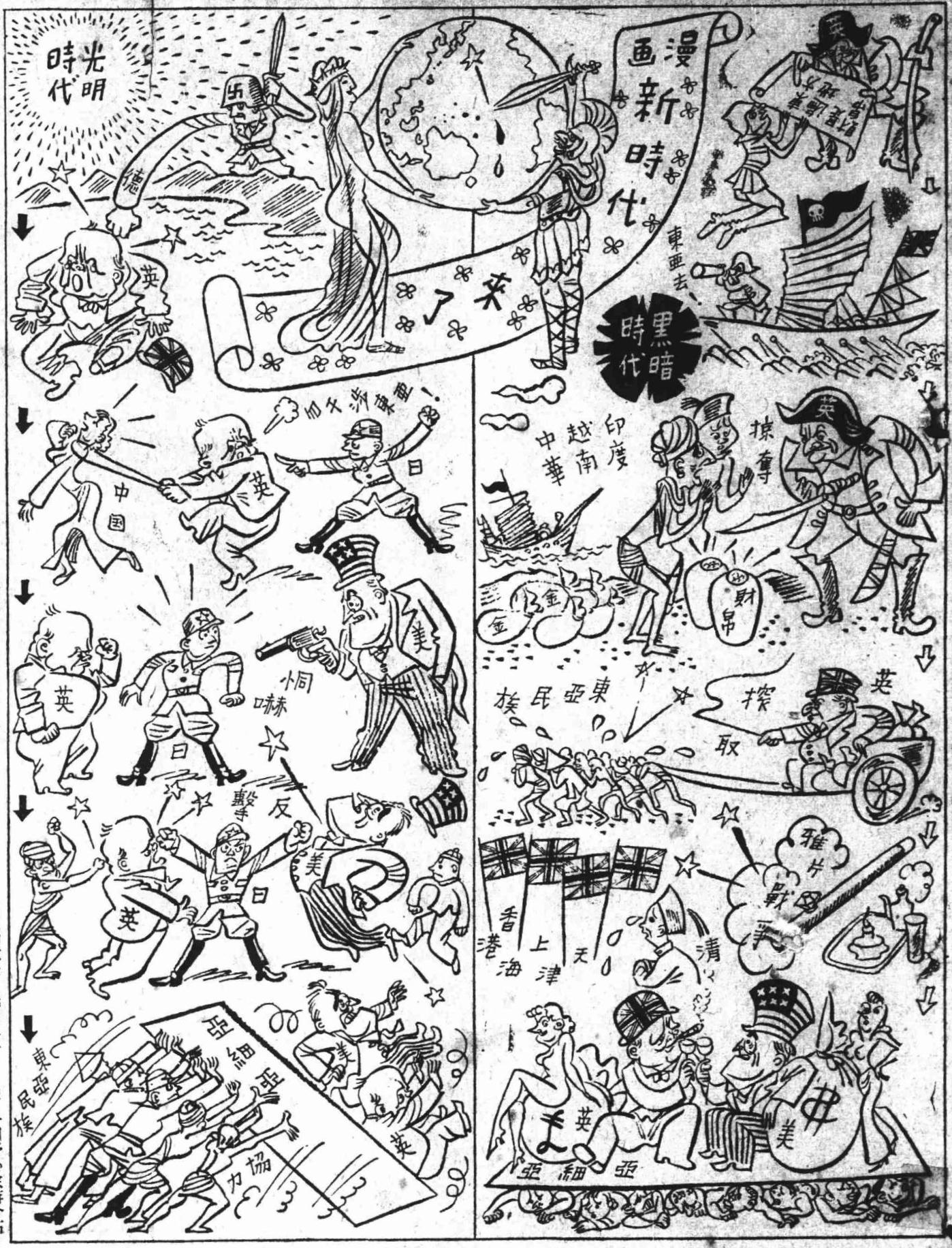
“The New Age Has Arrived”: Imperial Japanese Propaganda Manga from Occupied China, 1942
2023-07-04
413
382
Just sharing a fascinating piece of historical artifact – a comic strip, or more accurately, a manga, published in the January 1, 1942 edition of the Xinshenbao (新申報) newspaper.
Some background for context: Xinshenbao was a Chinese language pro-Imperial Japan collaborationist newspaper that was published in Shanghai during the Imperial Japanese occupation period. This specific strip was published just after World War II had ignited, following the infamous attack on Pearl Harbor on December 7, 1941.
The manga is aptly titled “The New Age has Arrived” (新時代来了) and serves as a very condensed and accessible vehicle for the narrative Imperial Japan wanted to promote.
The manga is split into two contrasting sides. The right side portrays what it calls the “Dark Ages (黒暗時代)” of colonialism, beginning with Christopher Columbus’s journey to the Americas and the subsequent exploitation and colonization of various regions, particularly Asia. The comic strip graphically highlights the European powers’ plundering of India, Vietnam, and China, and the subsequent events of the Opium Wars which resulted in Qing China ceding Hong Kong, Shanghai, and Tianjin. It then concludes with a telling depiction of the US and Britain resting on the backs of exploited East Asian peoples, a clear image of colonial oppression.
The left side, on the other hand, brings forth what the manga terms the “Enlightened Age (光明時代)”. Here, we see a caricatured version of world events from an Imperial Japanese perspective. Nazi Germany is shown striking back at Britain, while Imperial Japan sternly warns Britain against interference in East Asia. China is shown as a damsel in distress, presumably waiting for Japan, the knight in shining armor, to rescue her from Western oppression. Then the plot thickens, as the US is shown intimidating Japan with a firearm, egged on by a cheering Britain. But in a heroic turn of events, Japan retaliates, landing blows on both the US and Britain. The strip ends on a note of East Asian unity, showing the people cooperating to overthrow the colonial powers.
The purpose of this comic, much like most propaganda, is to galvanize support for Imperial Japan’s cause by framing it as a heroic struggle against Western colonialism and imperialism. It’s interesting how these narratives were disseminated through seemingly innocuous forms like comics, thereby reaching a wide audience, including children.
Source: https://www.archive.org/details/xsb-1942.01.01
Translation:
